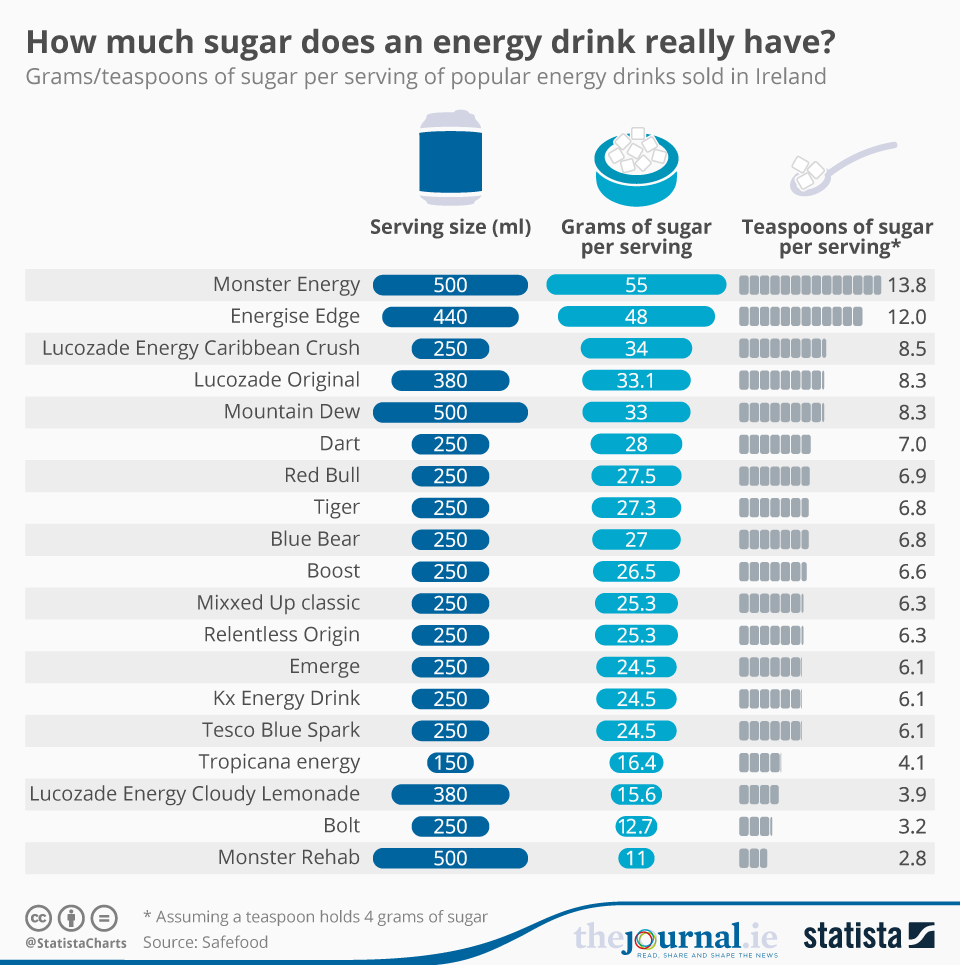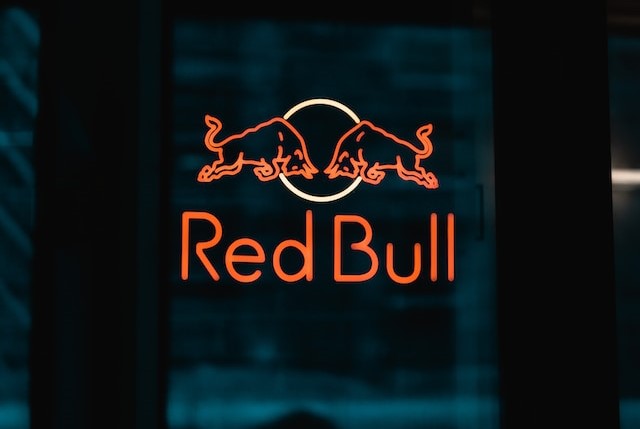Before we dive deep into the SWOT analysis, let’s get the business overview of Red Bull. Red Bull GmbH is an Austrian company founded in 1987 by Dietrich Mateschitz and Chaleo Yoovidhya, best known for its Red Bull energy drink. The company has since grown into a global brand, expanding its product range and venturing into various marketing and sports events.
Core Product: Red Bull’s flagship product is its energy drink, which contains caffeine, taurine, B-group vitamins, and sugars. The formula is designed to increase alertness, concentration, and energy levels. Red Bull has expanded its product line to include various flavors and sugar-free alternatives.
Market Presence: Red Bull is sold in over 170 countries, and it is the highest-selling energy drink globally, with a market share of more than 40%. The company has continued to grow, with annual sales of over 7 billion cans as of 2021.
A total of 11.582 billion cans of Red Bull were sold worldwide in 2022, representing an increase of 18.1% against 2021.
Marketing Strategy: Red Bull’s unique marketing strategy focuses on building brand recognition through extreme sports, cultural events, and innovative advertising. The company has sponsored and organized numerous events, including the Red Bull Air Race, Red Bull Cliff Diving, Red Bull Crashed Ice, and Red Bull Flugtag. Red Bull also sponsors various athletes across different sports, including Formula 1, soccer, and skateboarding.
Red Bull Marketing Strategy: Sampling & Extreme Sports
Media Presence: Red Bull has a strong media presence through its Red Bull Media House, which produces content ranging from TV shows, movies, and documentaries to print and digital media. Red Bull’s media strategy has successfully created a lifestyle brand that appeals to a broad audience, particularly in the action sports and adventure space.
Corporate Social Responsibility: Red Bull has initiated several social and environmental programs, such as the Wings for Life foundation, which focuses on spinal cord injury research. The company also aims to reduce its carbon footprint and has implemented various sustainability measures.
Financial Performance: Red Bull generated 9.68 billion euros ($10.53 billion) in FY23, with 24% YoY growth.
Here’s a SWOT analysis for Red Bull:
A SWOT analysis is a strategic planning tool used to evaluate the Strengths, Weaknesses, Opportunities, and Threats of a business, project, or individual. It involves identifying the internal and external factors that can affect a venture’s success or failure and analyzing them to develop a strategic plan. In this article, we do a SWOT Analysis of Red Bull.
SWOT Analysis: Meaning, Importance, and Examples
Strengths
- Strong brand recognition: Red Bull is synonymous with energy drinks and has a highly recognizable logo and tagline (“Red Bull gives you wings”). This strong brand recognition has enabled the company to maintain its market leadership position. How did “Red Bull” get its name? What are its ingredients?
- Unique marketing strategy: Red Bull’s marketing approach focuses on sponsoring extreme sports events, athletes, and teams, as well as organizing its own branded events. This has helped create a strong brand association with adventure, action, and high-energy activities, setting it apart from its competitors.
- Global presence: With its products in over 170 countries, Red Bull, has a wide-reaching distribution network, allowing it to cater to different markets and demographics.
- Diversified product portfolio: Red Bull offers a variety of flavors and product lines, including sugar-free and reduced-calorie options, which cater to different consumer preferences and health-conscious trends.
- Red Bull Media House: The company’s in-house media production arm creates and distributes a wide range of content, including films, documentaries, and magazines, further expanding the brand’s presence and enhancing its lifestyle image.
- Successful partnerships: Red Bull has formed partnerships with numerous high-profile sports teams, athletes, and events, further reinforcing the brand’s association with high-energy, action-packed activities.
Weaknesses
- Dependence on a single product category: Red Bull’s primary focus is on energy drinks, which makes it vulnerable to changing consumer preferences or potential regulatory changes that could affect the industry.
- Health concerns and regulatory scrutiny: Energy drinks have faced criticism for their high sugar and caffeine content, which may be linked to health issues like obesity, heart problems, and sleep disorders. Increased regulatory scrutiny or negative publicity could potentially impact sales.
- Premium pricing: Red Bull’s products are generally priced higher than many of its competitors, which could limit its appeal to cost-conscious consumers or those in emerging markets.
- Intense competition: The energy drink market is highly competitive, with numerous brands vying for market share. Competitors like Monster, Rockstar, and even traditional beverage giants like Coca-Cola and PepsiCo continue challenging Red Bull’s dominance.
- Limited target audience: Red Bull’s marketing strategy primarily focuses on extreme sports and adventure, which may limit its appeal to a broader audience. This could hinder growth in new markets or demographic segments.
- The potential negative impact of sponsorship: While Red Bull’s sponsorships of extreme sports and athletes have contributed to its brand image, any negative publicity or controversies involving sponsored individuals or events could harm the brand’s reputation.
 You will find more infographics at Statista
You will find more infographics at Statista
Opportunities
- Product diversification: Expanding into new product categories or offering healthier alternatives, such as natural energy drinks, functional beverages, or sports drinks, can help Red Bull to attract a broader customer base and mitigate risks associated with its dependence on energy drinks.
- Market expansion: Red Bull can focus on emerging markets with growing middle-class populations and increasing disposable incomes, such as Asia, Africa, and Latin America. These regions offer significant growth potential and can help the company diversify its revenue streams.
- Targeting new demographics: Red Bull can broaden its marketing strategy to appeal to a broader audience, such as older consumers or those interested in wellness and fitness. This could help the company to expand its customer base and increase its overall market share.
- Sustainability initiatives: Strengthening its commitment to environmental and social causes can enhance Red Bull’s brand reputation and attract environmentally conscious consumers. The company can focus on reducing its carbon footprint, using sustainable packaging, and supporting eco-friendly initiatives.
- Digital marketing and e-commerce: Red Bull can invest in strengthening its digital marketing capabilities and expanding its e-commerce presence, which will help it reach new customers and adapt to changing consumer behaviors.
- Strategic partnerships: Red Bull can form strategic alliances or collaborations with other companies, such as those in the food and beverage industry, technology, or sports equipment sectors. This can help the company to expand its product offerings, enter new markets, and leverage synergies to drive growth.
- Technological innovation: Investing in research and development to create innovative products, such as energy drinks with enhanced functional benefits or unique ingredients, can help Red Bull maintain its competitive edge and cater to evolving consumer preferences.
Threats
- Health concerns and regulations: Increased awareness of the potential health risks associated with high sugar and caffeine content in energy drinks may lead to stricter regulations, negative publicity, and declining consumer interest. This could adversely affect Red Bull’s sales and market share.
- Intense competition: The energy drink market is highly competitive, with strong rivals like Monster and Rockstar and traditional beverage companies like Coca-Cola and PepsiCo introducing their own energy drink lines. This competition can result in pricing pressure, reduced market share, and the need for continuous innovation to stay ahead.
- Changing consumer preferences: As consumers become more health-conscious, they may shift their preferences towards healthier alternatives, such as natural or functional beverages, which could negatively impact the demand for energy drinks like Red Bull.
- Supply chain disruptions: Red Bull relies on an efficient and robust supply chain for sourcing its ingredients, manufacturing, and distribution. Disruptions due to natural disasters, political instability, or other unforeseen events can negatively impact the company’s operations and bottom line.
- Counterfeit products: The presence of counterfeit or imitation products in the market can damage Red Bull’s brand reputation and result in lost sales.
- Social and environmental scrutiny: As consumers become more aware of their product’s environmental and social impacts, Red Bull may face increased scrutiny and pressure to adopt more sustainable practices and demonstrate its commitment to corporate social responsibility.











